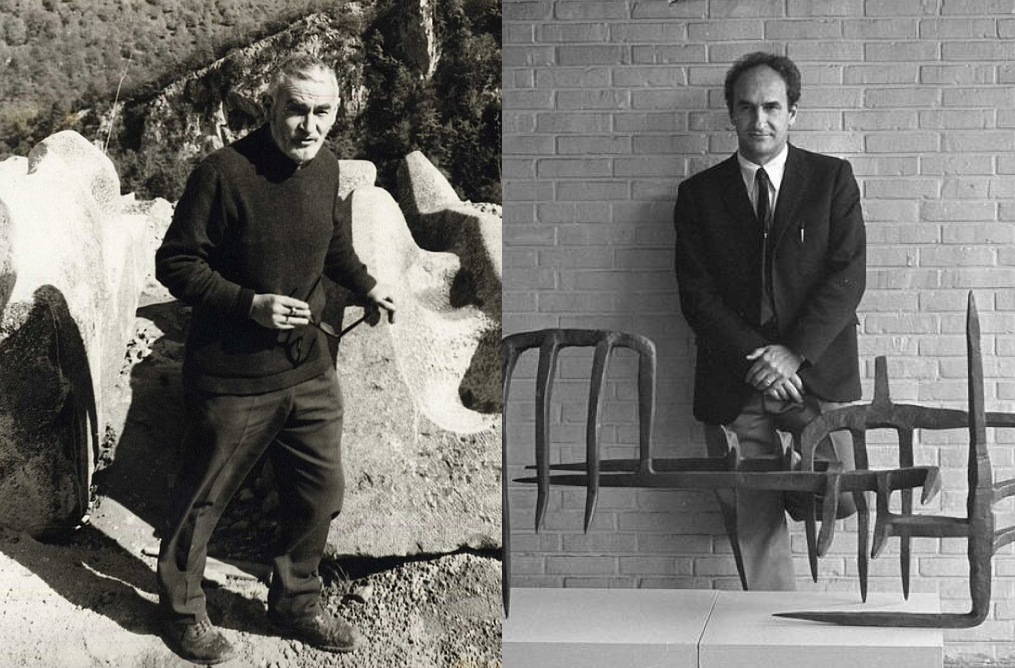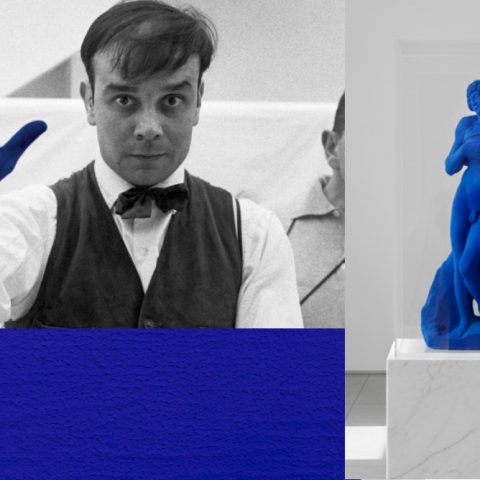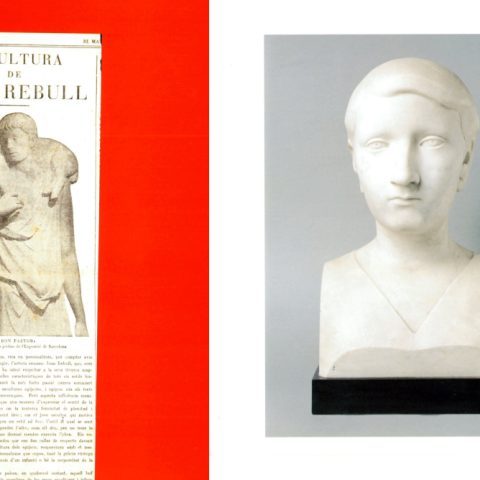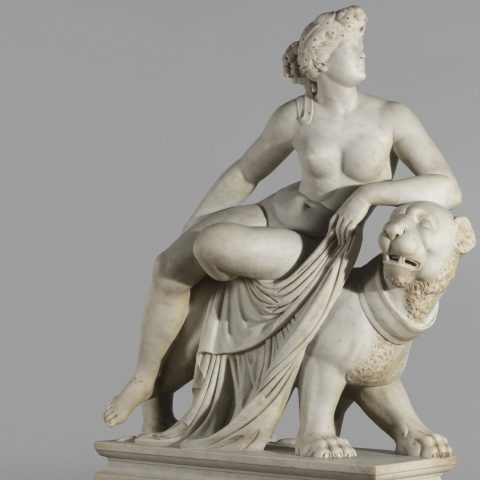The transformation of Basque sculpture in the 20th century
In the mid-twentieth century, Basque sculpture underwent a profound transformation that placed it on the international art map. In this process of renewal and avant-garde, two figures emerged as indisputable references: Chillida (1924-2002) and Oteiza (1908-2003). Both broke with the figurative tradition and explored new ways of relating to space, matter and the viewer’s perception. Their work turned the Basque Country into a center of sculptural experimentation of worldwide projection.
The Basque School: origin of the renovation
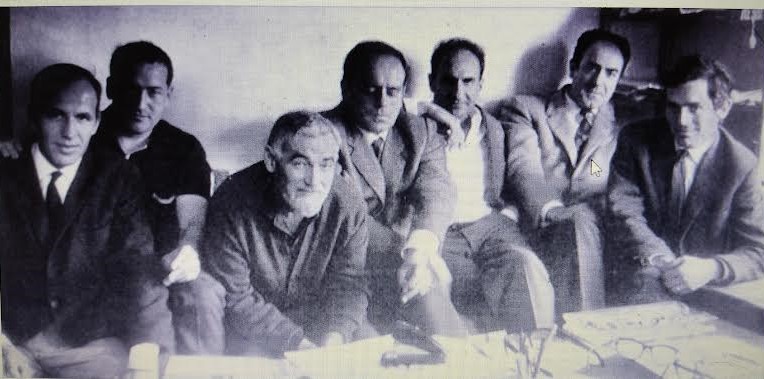
The so-called Basque School was not a formal institution, but a movement of art and thought that was born from the exchange between workshops, competitions, exhibitions and debates between artists. Its aim was to renew sculpture by breaking with classical figuration and exploring abstraction, geometry, light and emptiness.
Several groups emerged from this environment, one in each Basque province plus Navarra. The most influential was the Gaur group (meaning “today”), founded in Guipuzcoa in 1966. From its first exhibition at the Bariandiarán gallery in San Sebastián and with the publication of its manifesto that same year, Gaur became the nucleus of the Basque artistic avant-garde. It was made up of eight artists, among them Chillida and Oteiza, and brought together three generations with diverse plastic languages.
Although tensions between Oteiza and Chillida led to the dissolution of the group in 1969, Gaur marked a milestone by placing Basque art in dialogue with international currents. Its hallmarks were the Basque cultural roots, the connection with nature and an inexhaustible will to experiment.
Oteiza: the sculptor of emptiness
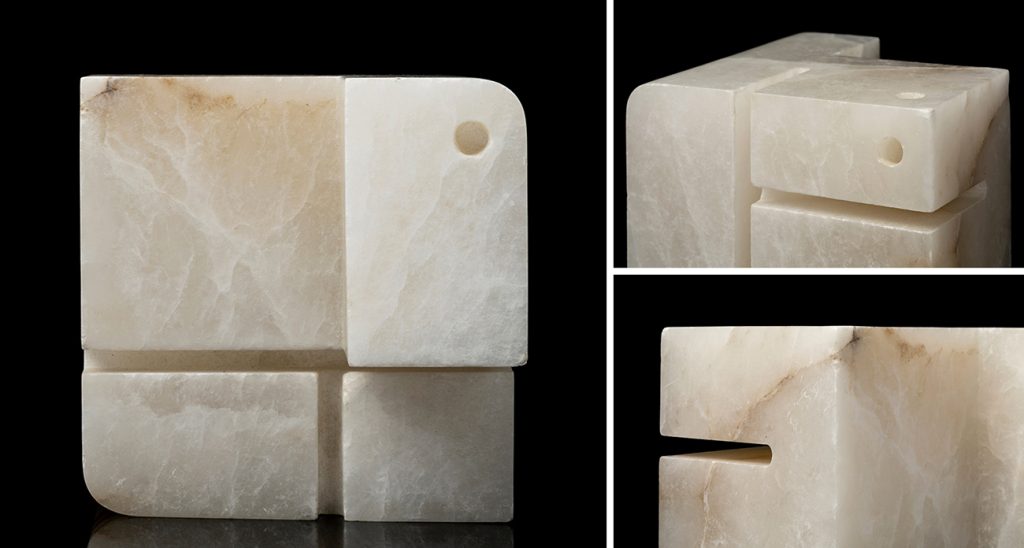
For Oteiza, sculpture was not about constructing forms, but about liberating the interior space of matter. His vision gave emptiness the same importance as the physical presence of the work. From this radical conception, he developed geometric investigations that transformed contemporary sculpture and brought it closer to the transcendent.
Among his most innovative contributions are the Light Modules, abstract pieces conceived to make the void visible and explore the relationship between volume, light and space. More than static objects, these sculptures invite the viewer to an active experience, where perception becomes the protagonist.
Chillida: monumentality and dialogue with the environment
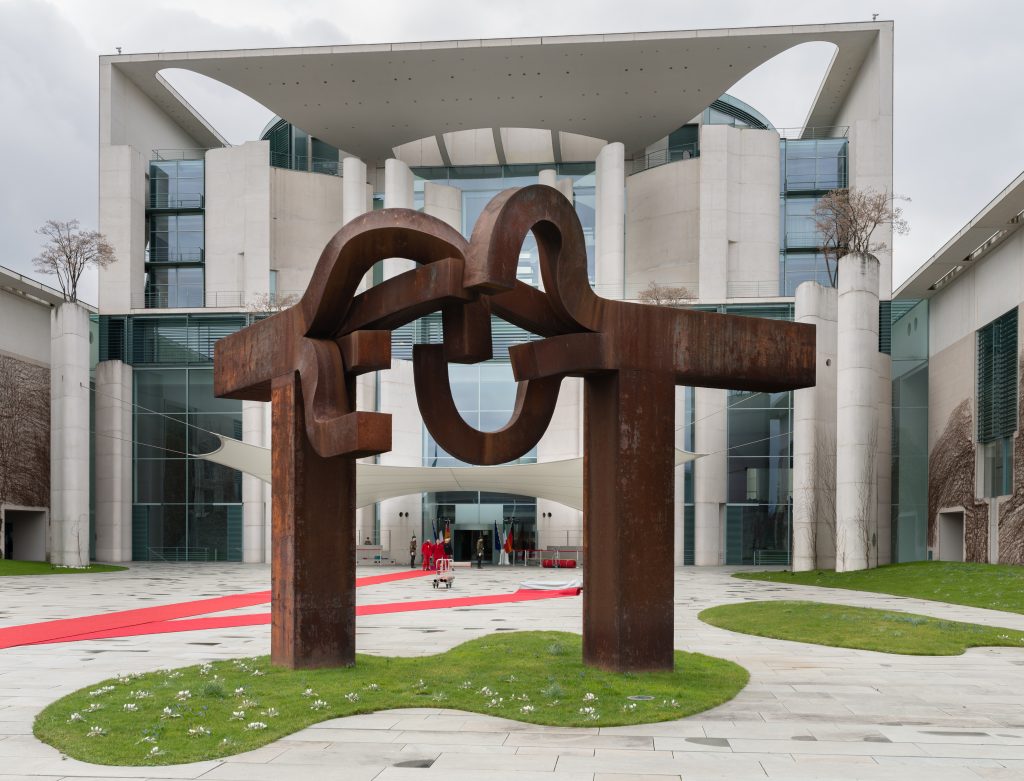
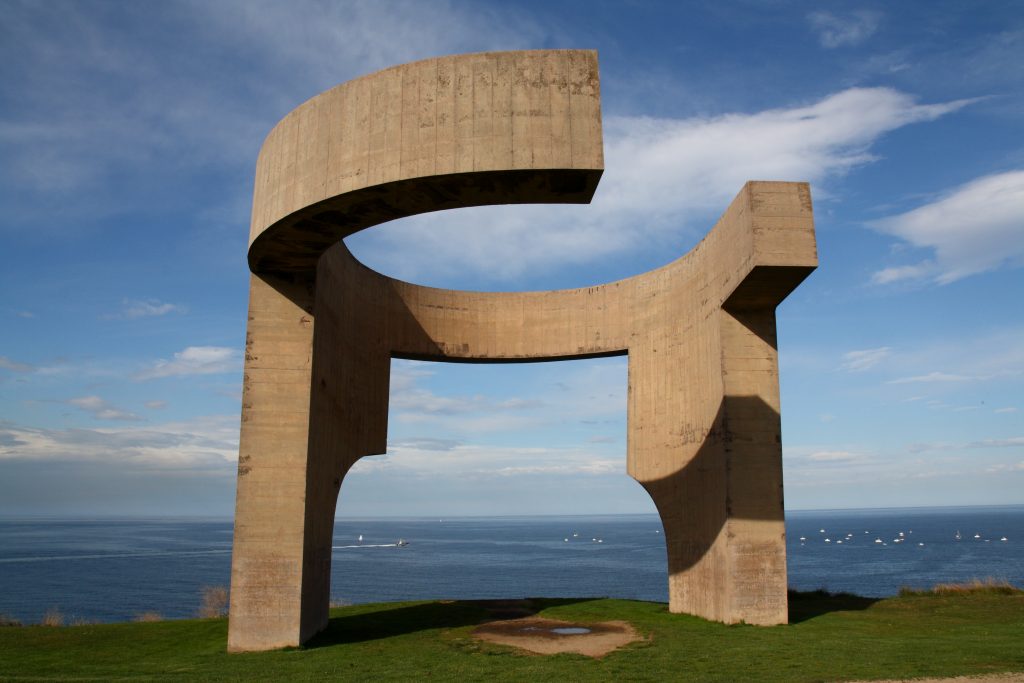
While Oteiza sought essence through emptiness, Chillida explored the tension between matter and space, working with iron, steel and stone. His sculptures, distributed in public spaces in Europe, America and Japan, are characterized by a monumental force combined with a poetic sensibility. In them, the work dialogues with the landscape and with the historical memory of the place, becoming part of its environment.
International impact and shared legacy
Chillida and Oteiza managed to project Basque sculpture beyond its borders. In 1957, Oteiza won the International Sculpture Grand Prize at the São Paulo Biennial, a recognition that consolidated his international influence. His research on emptiness, light and geometry inspired numerous artists in Europe and America.
For his part, Chillida achieved a monumental presence in cities and museums around the world, where his works continue to generate dialogue with the spaces they inhabit.
Together, they established principles that are still valid today: art as experience, space as protagonist and matter as a vehicle for aesthetic and spiritual reflection. Their legacy demonstrates that 20th century Basque sculpture was not only modern, but also became a universal reference of innovation and creativity.
Discover the works of Oteiza and Chillida in the next Contemporary Art auction on October 15 or explore the catalog of works for sale.
If you liked this article we also recommend:

